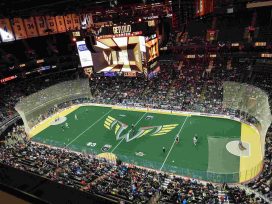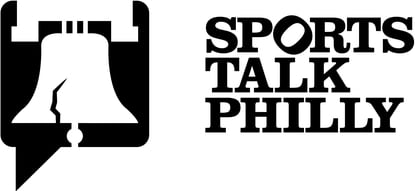Historically, the Philadelphia Flyers are not very good in shootouts. Since the National Hockey League adopted the format in 2005-06 as part of the 'new NHL' following the lockout that washed away the entire 2004-05 campaign, the Flyers are 30-62 in the dreaded skills competition.
While every point counts, the Flyers gave away 11 of them last season by winning only three of 14 shootouts following a scoreless 4-on-4 overtime period.
Finally, there appears to be light at the end of the tunnel. While the league is not getting rid of the shootout, they are adopting a new format for overtime — 3-on-3 — for five minutes.
The format has been tested in the American Hockey League where more than three-quarters of games requiring overtime were settled prior to heading to a shootout, a statistic that obviously resonated well with the league prior to implementation.
Ending a game regulation or overtime is obviously more of a team effort, something Flyers coach Dave Hakstol is in favor of and believes will be accomplished with the new format.
"I like the idea of it," Hakstol said after Tuesday's initial trial against the New York Rangers. "There wasn't a ton of excitement to it tonight. I don't know if we got a true sample of it tonight, but I like the idea of it. I think it's more of a team-oriented way to end the game and I think most games will end in the five-minute session before the shootout."
Fans certainly would like to see the game end in the overtime period as the shootout has been flat-out painful to watch. In addition, it has lost it's luster due to the amount of them over the past nine seasons.
In year's prior to the shootout's addition, the idea of a skater going in 1-on-1 was exciting; the play was typically only seen on penalty shots and in some international situations such as the Olympics — like Peter Forsberg's goal in 1994. The repetitive nature by which the event now determines the victor of a game unsettled by 65 minutes of play has become numbing to the fans.
Players have voiced their displeasure with the shootout as well, especially goaltenders such as Steve Mason, who even mentions that if playoff games are never decided by a shootout, why should regular season game be?
For the first time in many years, the Flyers may actually benefit from reaching a 3-on-3 overtime session this year. With the ice wide open, the club has a few dynamic players that could generate tons of pressure in the offensive zone, thus ultimately leading to a winning goal. Imagine Claude Giroux and Jake Voracek paired with a puck-moving defender such as Mark Streit. The space alone would make it difficult to stop those guys.
Although some coaches will not admit it, there is a strategy involved into playing 3-on-3 after already having skated hard for more than three periods of play. Depending on the skill and energy level of the guys on the ice, there is certainly an opportunity for odd-man rushes and guys all alone in front.
Each team will test the new overtime format three times in the preseason. With the Flyers first crack coming against New York this past week, here are some observations:
- The ice is wide open. With only three skaters apiece, teams could attempt man-on-man coverage but most cracks at it fizzled during the transition game, especially with speedy forwards leading the charge.
- The initial strategy seems to be two forwards and one defenseman. Inevitably, there will be a team that tries three forwards at some point — probably Pittsburgh with Sidney Crosby Evgeni Malkin and Phil Kessel — but the role of the defenseman should not be overlooked, especially when the format can create numerous transitional rushes.
- The shifts were short. In addition to the fact that players are tired after 65 minutes, it's much easier to get caught in a vulnerable defensive position with less skaters on the ice. If timed appropriately, the changes could actually lead to scoring chances off of a quick transition.
- A penalty changes the dynamic a bit. In Tuesday's game, the Flyers took a penalty early on into the extra session. Instead of playing the resulting power play as 3-on-2, the teams revert back to a 4-on-3 format.
The new rule is certainly being well-received throughout the league thus far, however, it will not eradicate the league of shootouts completely. The Flyers and Rangers managed to make it through the session scoreless, which would have resulted in a shootout to determine the winner. If this were the regular season, how would the Flyers have fared?
Probably not good.
Zach Hopkins is a contributing writer for Flyerdelphia. Follow him on Twitter @healedbyhockey.







